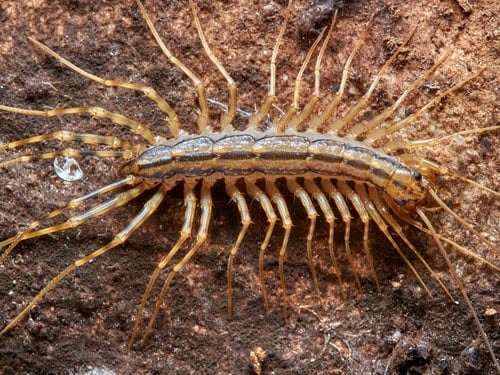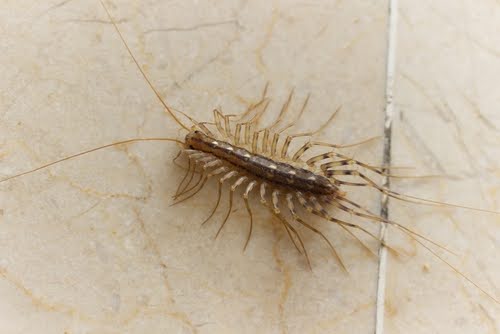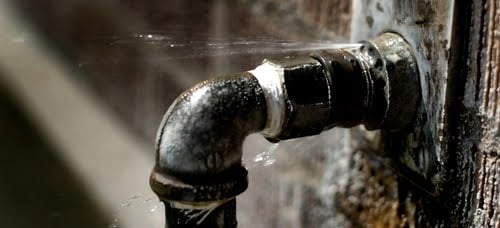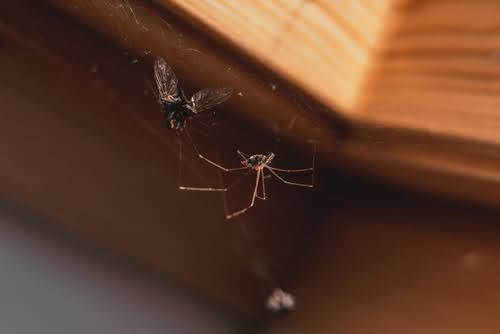Centipedes are probably not the most welcome guests in your home. By learning more about house centipedes and why they invade, you can take proactive steps to prevent infestations and protect your home.
What are the Kinds of Centipedes in Your Home?
The centipedes in your home are most likely “house centipedes.” Adult house centipedes are 1 to 1 ½” in length—however, their legs can make them look 3” to 4” long. They have 15 pairs of legs (one per body segment). The last pair of legs on either side of the centipede is almost twice as long as their bodies. These legs have distinctive dark brown striping. You’ll probably find house centipedes in your basement, though they’re also common in bathrooms and crawl spaces.

What Attracts Centipedes to My House?
Centipedes seek moisture, food, and shelter. Unlike many insects, they lack a moisture-preserving cuticle, making them dependent on humidity to survive. Without a damp environment, house centipedes can’t stay active or hunt, so they’re attracted to dark, humid areas in your home.
If you have centipedes, you likely have other pests as well, since they prey on insects like silverfish, spiders, carpet beetles, and roaches. They also prefer to hide in clutter like boxes, bags, and debris while hunting.

Are House Centipedes Dangerous or Damaging?
The short answer is no. Centipedes do not pose any real danger to you, your family, or your home. However, adult house centipedes have two small front legs near their mouths that they use like stingers to inject a paralytic venom. They primarily use this venom for hunting, but they may also use it defensively.
It is not often that centipedes bite humans this way. When they try, centipedes usually can’t break a person’s skin. Even when they successfully do that, centipedes rarely choose to inject their venom. At worst, centipede stings cause localized pain, swelling, and redness. Symptoms may be comparable to a bee sting and shouldn’t last very long. Centipedes only bite when they feel threatened or startled. If centipede bite symptoms persist, you should contact a doctor.
How Do I Keep Centipedes Out of My House?
Centipedes seek out moisture and food, so keeping them out of your home means eliminating their access to these resources. Here’s how you can do that effectively
-
Reduce Moisture:
- Check areas in your home prone to high moisture or humidity, such as the basement, bathrooms, and kitchen.
- Look for and repair any sources of excess moisture, like hidden pipe leaks.
- Consider installing a dehumidifier in particularly humid areas to control moisture levels.
-
Seal Drafts:
- Identify and seal drafts, especially in humid parts of your home, as they contribute to moisture buildup and let pests inside.
-
Prevent Pest Infestations:
- Control other pest infestations, since house centipedes rely on other insects for food.
- Inspect and seal any access points where centipede prey might enter, focusing on areas like the basement, crawl spaces, attics, door frames, and window frames.

By following these tips, you can help prevent centipedes from making your home theirs. While it may not completely eliminate the fear of encountering them, it will certainly reduce the chances of those creepy encounters happening!
Get Rid of and Prevent Centipedes with Plunkett’s
Whether you have a centipede infestation or you want to do everything you can to prevent one, schedule a service with Plunkett’s. We’ll eliminate your centipede problem for good!







